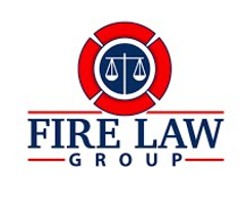 |
||||||||||||
| Past Issues | Subscribe | Advertise with us | Txfirechiefs.org | ||||||||||||
|
||||||||||||
NFPA and Domino’s are teaming up for the 15th year in a row to deliver fire safety messages and pizza during Fire Prevention Week, Oct. 9 -15. Fire departments aare encouraged to join forces with their local Domino’s store to implement the program in their communities.
If your fire department would like to participate in the NFPA and Domino’s FPW program, please contatct Chantele Telegadas, chantele.telegadas@dominos.com. 
SOURCE: Lisamarie Sinatra, NFPA
In 2019, NFPA began working with seven active Firewise USA sites in Arizona, Colorado, Texas, Utah, Virginia, Washington, and Wisconsin, challenging them to improve their resilience to wildfire. This resulted in the creation of a two-year pilot program, “Sites of Excellence,” designed to increase participation in active wildfire risk reduction. Now at the end of the two years, communities report higher levels of engagement and interest in the Firewise program and wildfire mitigation efforts. A free report and interactive story map are now available, and each provides a view into the challenges, successes, and best practices discovered during the pilot. 
SOURCE: FireRescue1 According to a new report from the National Academies of Sciences, Engineering, and Medicine, testing for exposure to perfluoroalkyl and polyfluoroalkyl substances (PFAS) should be offered to patients who are likely to have a history of elevated exposure. This includes firefighters who are exposed to PFAS through their work. The report is intended to inform CDC clinical guidance and illustrates the evidence of association between PFAS exposure and increased risk of decreased antibody response, dyslipidemia (abnormally high cholesterol), decreased infant and fetal growth, and increased risk of kidney cancer. The report also states that if testing reveals PFAS levels associated with an increased risk of adverse effects, patients should receive regular screenings and monitoring for these and other health impacts.

SOURCE: Amy Simonson and Holly Yan, CNN What started as a grass fire in suburban Dallas turned into a devastating blaze, torching 10 to 20 acres and damaging more than two dozen homes, according to officials. The fire ripped through a neighborhood of Balch Springs Monday, after someone mowed an area of tall grass or brush, known as "brush hogging." "The fire started from someone brush hogging in the field behind the homes," Balch Springs Fire Marshal Sean Davis told CNN. "He hit some debris in the field that caused a spark. The spark set the cut grass on fire." Nearby residents were evacuated in the suburb about 15 miles southeast of Dallas. Davis said the blaze damaged 26 homes, and nine of them are a "total loss." At least six fire departments helped extinguish the flames by Monday night. No injuries were reported.

SOURCE: Andrew Wulfeck, FOX26 Houston
A Crowell wind farm lost a turbine Friday to what officials believe was a devastating lightning strike. Incredible video from witnesses and firefighters shows the wind turbine generator ablaze and disintegrating in the sky. Crews with the Crowell Volunteer Fire Department responded, but Fire Chief Perry Shaw said there was little his firefighters could do for the unusual situation. "We’re not equipped to handle that kind of fire. Nobody in the area really is to speak of," Shaw said. Shaw estimates there were 800 gallons of oil in the gearbox and around 1,300 gallons of mineral oil in the ground-level transformer, which caused the dark black smoke. According to the facility, no one was harmed, and the fire only affected one of its turbines. 
This week's update covers the following:
• Treasury Releases Updated SLFRF Reporting Guidance, • Federal Infrastructure Bill Update, • Red-Light Camera Data Required by TxDOT, • House and Senate Committee Interim Hearings, • Resolutions for 2022 Annual Conference Due Aug. 22. 
In this week's episode of Fire Law Roundup, Brad and Curt discuss two more AFFF-related toxic tort suits, the settlement of a lawsuit challenging the promotional process as violating merit principles, a lawsuit in the Puerto Rico Fire Department alleging religious discrimination, a wrongful death suit filed against a fire department in Oklahoma, and a decision upholding a physical abilities test in a Wisconsin Fire Department despite a disparate impact on women. They wrap up the episode with a discussion of the recent suspension of a police officer in Rochester, New York for handcuffing an EMT.

Source: Molly Schiff and Magdalena Petrova, CNBC Nico Smith wanted to “have a living,” not just make one, and that desire prompted her to quit her $116,000 a year job as a lawyer in February 2020 to strike out on her own. She ended up starting her own law firm, and later discovered a passion for firefighting. She may not be making her previous six-figure salary, but Smith is far from unhappy. Being a firefighter is “really a matter of what it means to be alive,” she says. “It’s invigorating. It’s exciting. The people are amazing, and you get to be outside. I really like all those things and I really like helping people. “I don’t think that it’s healthy for humans to do something just for money. You have to find something that makes you feel like you’re doing something good.” For Smith, that’s firefighting.

SOURCE: Fire Engineering
In this article, Brian McQueen, a 44-year member and past chief of the Whitesboro (NY) Fire Department, covers what he calls call the “Big Four” for leadership: Do your job, treat people right, have an all-in attitude, and demonstrate all-out effort. "Your job as a leader isn’t done just because you passed the promotion test or were voted in by your friends at a meeting," he says. "It is up to you to take the torch, run with it, and make your fire department the best it can be." 
SOURCE: Firehouse
In this article, Charles Napp explains how transactional leadership differs from transformational leadership and why the latter might be the most effective for firefighters. "Much of leadership involves learning to define and interpret problems," he says. "Understanding the differences between generational cohorts goes a long way toward helping to close the gap. Closing the gap is a must, because, whether we like it or not, the millennial generation is here to stay and is a growing force in the fire service." 
|
||||||||||||






